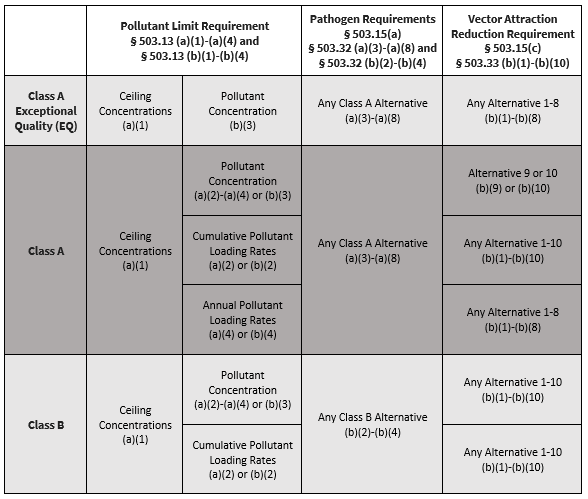
Land application involves the spreading of biosolids on the soil surface or incorporating or injecting biosolids into the soil. Biosolids land application occurs at various sites including agricultural lands, forests, mine reclamation sites, and other disturbed lands, parks, and golf courses. Composted and treated biosolids are used frequently by landscapers and nurseries and by homeowners for lawns and home gardens. Land application has been practiced for decades and continues to be the most common method for using biosolids. Biosolids serve as a soil enrichment and can supplement or replace commercial fertilizers.
40 CFR Part 503 divides biosolids into “Class A” and “Class B” biosolids in terms of pathogen reduction requirements. However, the terms have been more commonly used to describe the suite of requirements and treatment methods for pollutants, pathogens, and vector attraction reduction.

While Part 503 mandates specific method alternatives for meeting all requirements, there are several documents that help outline and describe those options:
Composting is the biological degradation of organic materials in sewage sludge under controlled aerobic conditions. The process is used to stabilize wastewater solids to create a marketable end-product that is easy to handle, store, and use as a soil amendment. The end product is often a Class A, humus-like material without detectable levels of pathogens that can be applied as a soil conditioner and fertilizer to gardens, food and feed crops, and rangelands.